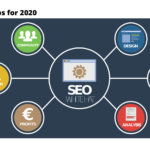Elevate Your Content
High-quality and valuable content is a cornerstone for driving visibility and engagement. In a competitive landscape like New York, where businesses vie for attention, crafting compelling content is essential. The unique challenges of this bustling market, including diverse demographics and rapid trends, require a strategic approach to content creation. Here are effective strategies for developing content that resonates with the local audience, enhances rankings, and ultimately drives SEO success. By understanding the nuances of the New York market, businesses can tailor their content to stand out and thrive.
Understanding the Role of Content in SEO
What is SEO Content?
Search engine optimization content refers to any content created with the primary goal of attracting search engine traffic. It encompasses various formats, including blog posts, articles, infographics, videos, and more. The key components of SEO content include:
- Keywords: Strategically placed words and phrases that users search for online.
- Relevance: Content should align with users’ search intent.
- Structure: Well-organized content with headings, subheadings, and bullet points improves readability.
Content significantly impacts search engine rankings because engines use algorithms to assess its relevance and quality. Quality content is more likely to be shared, linked to, and engaged with, all of which signal to search engines that the content is valuable.
Why Quality Content Matters
High-quality content is paramount for user engagement and retention. Engaging content keeps visitors on your site longer, reducing bounce rates and increasing the likelihood of conversions. Search engines evaluate content quality based on various factors, including:
- Depth of information: Comprehensive content that thoroughly covers a topic.
- Originality: Unique content that offers fresh perspectives or insights.
- User experience: Content that is easy to read and navigate enhances overall satisfaction.
In essence, high-quality content not only helps attract visitors but also builds trust and authority in your niche, which is crucial in a competitive market like New York.
Identifying Your Audience
Knowing Your Target Audience
Understanding your target audience is the foundation of creating relevant and engaging content. Techniques to grasp the demographics and preferences of New York audiences include:
- Market Research: Utilize surveys, social media analytics, and industry reports to gather insights about your audience’s interests and behaviors.
- Competitor Analysis: Observe what content is resonating with your competitors’ audiences. This can provide valuable insights into what works and what doesn’t.
Audience research is vital in ensuring that your content addresses the specific needs and preferences of your target demographic, increasing the chances of engagement and conversion.
Creating Buyer Personas
Buyer personas are semi-fictional representations of your ideal customers, based on data and research. They play a crucial role in shaping your content strategy. Steps to create effective buyer personas tailored to the New York market include:
- Gather Data: Collect information from user-generated content like customer surveys, interviews, and analytics to understand your audience’s demographics, interests, and pain points.
- Identify Patterns: Look for common traits among your customers, such as age, occupation, lifestyle, and purchasing behavior.
- Develop Personas: Create detailed profiles that include a name, background, goals, challenges, and preferred content formats for each persona.
By tailoring your content to meet the specific needs of these personas, you can create content that resonates with your audience, ultimately driving engagement and improving your SEO efforts.
Developing a Content Strategy
Keyword Research for Compelling Content
Keyword research is a foundational element in shaping your content topics. Understanding what your audience is searching for allows you to create relevant content that meets their needs.
- Importance of Keyword Research: When you identify relevant keywords, you can align your content with user intent, increasing the likelihood of appearing in search engine results pages. This is especially crucial in a diverse market like New York, where consumers have specific interests and needs.
- Tools and Techniques: Utilize tools like Google Keyword Planner, SEMrush, and Ahrefs to discover relevant keywords. Techniques such as analyzing competitors, leveraging Google Trends, and exploring local search terms can provide valuable insights. Focus on long-tail keywords that reflect the specific services or products you offer in the New York area, as these often have less competition and higher conversion rates.
Content Types that Resonate
Different content types can significantly impact user engagement. Understanding what resonates with your audience is key to a successful content strategy.
- Overview of Content Types:
- Blogs: Great for in-depth analysis, tips, and guides relevant to your industry.
- Videos: Ideal for tutorials, behind-the-scenes content, or customer testimonials, engaging users visually.
- Infographics: These are effective for presenting complex information in a digestible format, making them shareable and appealing.
- Best Practices: When choosing the right content format, consider your audience’s preferences, the complexity of the topic, and the goals of your content. For instance, younger audiences may prefer video content, while professionals might appreciate detailed blog posts.
Crafting Engaging and Relevant Content
Writing Compelling Headlines
Headlines are the first impression of your content and play a crucial role in attracting clicks and improving SEO.
- Importance of Headlines: A well-crafted headline can significantly influence whether users choose to read your content. It should capture attention while incorporating relevant keywords for search engines.
- Tips for Crafting Attention-Grabbing Headlines:
- Use numbers or lists (e.g., “5 Tips for…”)
- Pose questions that provoke curiosity (e.g., “Are You Making These SEO Mistakes?”)
- Keep it concise and clear while highlighting the value of the content.
- Explanation of Storytelling: By weaving narratives into your content, you can create emotional connections with your audience. Storytelling can simplify complex ideas and make your brand more relatable.
- Examples of Effective Storytelling: Brands that share customer success stories, origin tales, or challenges overcome can create compelling narratives that resonate with readers. For instance, a local New York bakery could share a story about its founding, the challenges faced, and its commitment to using local ingredients, thus establishing a strong community connection.
- Importance of Local Relevance: Content that resonates with local audiences builds trust and engagement. New Yorkers are proud of their city, and incorporating local elements can enhance their connection to your brand.
- Strategies for Integrating Local Culture:
- Mention local events, festivals, or landmarks relevant to your content.
- Feature local influencers or businesses in your content to create a sense of community.
- Tailor your messaging to reflect the unique characteristics of different neighborhoods in New York.
Utilizing Storytelling Techniques
Storytelling is a powerful tool for enhancing content engagement.
Incorporating Local Elements
Local relevance is crucial for engaging New York audiences and improving your SEO.
Transform Your Content
Optimizing Content for SEO
On-Page SEO Best Practices
On-page SEO involves optimizing individual web pages to rank higher and earn more relevant traffic. Key elements include:
- Title Tags: These are crucial for both SEO and user engagement. A well-crafted title should include relevant keywords and accurately describe the content. Keep it concise (around 50-60 characters) to ensure it displays correctly in search results.
- Meta Descriptions: This is a brief summary of a page’s content that appears in search results. A compelling meta description should also include target keywords and entice users to click. Aim for around 150-160 characters for optimal display.
- Headings: Properly structured headings (H1, H2, H3, etc.) help organize content and improve readability. Use H1 for the main title and H2 or H3 for subheadings to break up sections and guide readers through your content.
- Optimizing Images: Use descriptive file names and alt text for images to improve SEO. This not only helps search engines understand the content of images but also enhances accessibility for users with visual impairments.
- Internal Links: Incorporating internal links to relevant pages within your website can improve navigation, increase time spent on the site, and help search engines crawl your site more effectively.
Structuring Content for Readability
The way content is structured significantly affects user experience and engagement.
- Best Practices for Formatting Content: Utilize subheadings, bullet points, and numbered lists to make your content easily scannable. Readers often skim content, so clear formatting helps them find the information they need quickly.
- Clear and Logical Structure: Maintain a logical flow from introduction to conclusion. A well-organized piece with a clear structure not only enhances readability but also improves SEO by helping search engines understand your content hierarchy.
Promoting and Distributing Your Content
Leveraging Social Media
Digital marketing and tapping the power of social media is helpful for promoting content and engaging with your audience.
- Strategies for Promoting Content: Share your content across various platforms (e.g., Facebook, Twitter, LinkedIn) to reach different audiences. Tailor your messages to suit each platform, and include engaging visuals to capture attention. Utilize hashtags relevant to your content and local area to increase visibility.
- Engaging with Local Communities: Connect with local groups or forums related to your industry. Participating in discussions and sharing your content where it’s relevant can help establish your authority and attract more local traffic.
Building Backlinks to Your Content
Backlinks are links from other websites to your content and play a critical role in SEO.
- The Role of Backlinks: High-quality backlinks enhance your site’s authority and can significantly improve your search engine rankings. Search engines view backlinks as endorsements, indicating that your content is valuable and trustworthy.
- Tips for Acquiring High-Quality Backlinks:
- Guest Blogging: Write articles for reputable blogs in your industry that link back to your website.
- Networking: Build relationships with local businesses and influencers who may be willing to share your content or link to it.
- Creating Shareable Content: Produce high-quality, informative content that others naturally want to link to, such as in-depth guides or research findings.
Measuring Content Success
Key Metrics to Track
To assess the performance of content, businesses must track essential metrics such as traffic, engagement, and conversions. Analytics tools like Google Analytics and SEMrush can provide insights into how content is performing, allowing for informed decision-making.
Adapting Based on Insights
Regularly analyzing data is crucial for refining content strategies. By implementing changes based on audience feedback and performance data, businesses can continuously improve their content, ensuring it remains relevant and effective in achieving SEO goals.
Crafting compelling content is essential for achieving SEO success in New York’s competitive digital landscape. Businesses must prioritize content creation as a core element of their SEO strategies, focusing on quality and relevance to engage their target audience effectively. As search engine algorithms and consumer preferences continue to evolve, the ongoing optimization of content will be vital for maintaining visibility and relevance. By investing in high-quality, optimized content, businesses can enhance their search rankings, attract local customers, and build a strong online presence that stands the test of time.



































































































































































































































